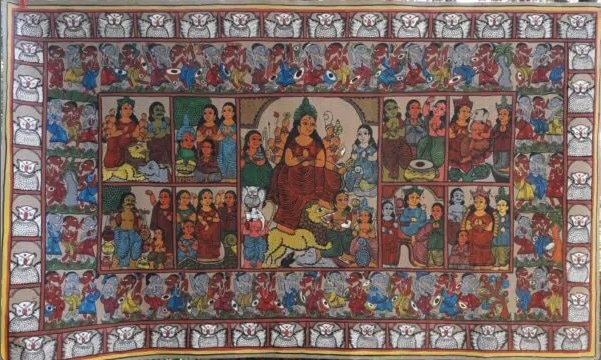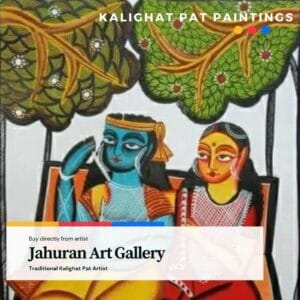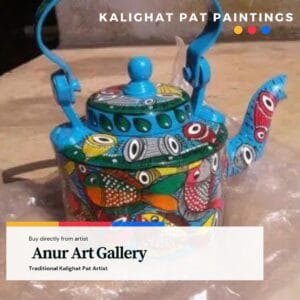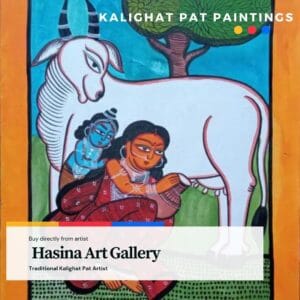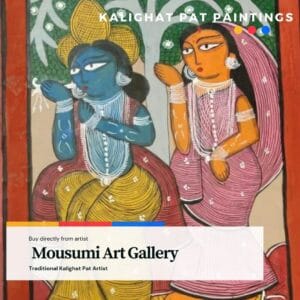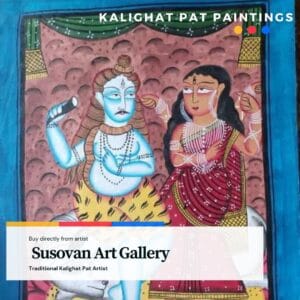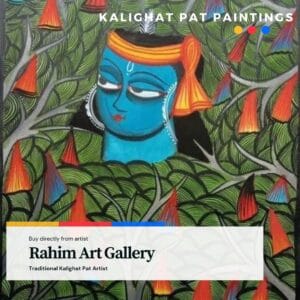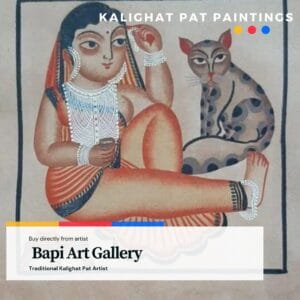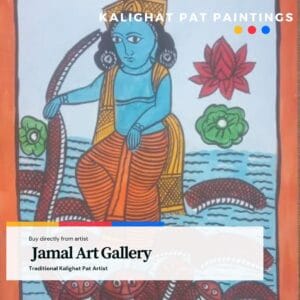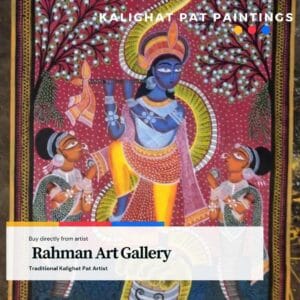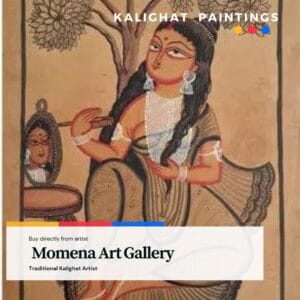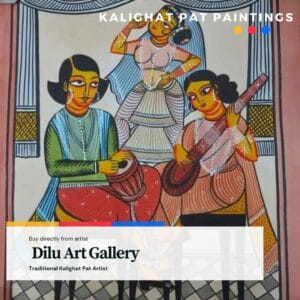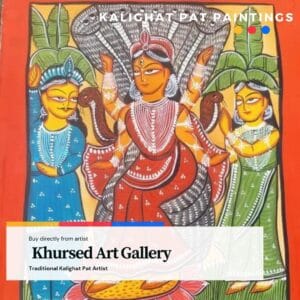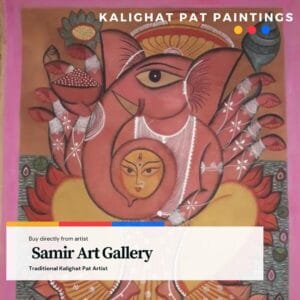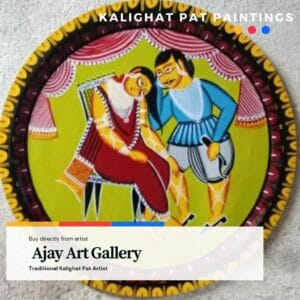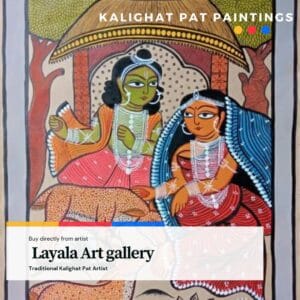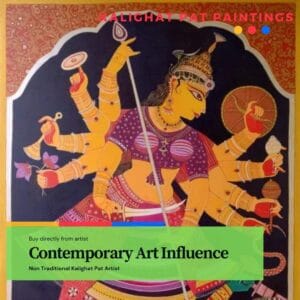Kalighat Pat Painting
Kalighat paintings are a tradition of religious art prevalent in West Bengal, India. The paintings of the Hindu goddess of the same name, Kali, are painted on cloth and can be seen on roadside stalls and shops. These paintings depict various scenes from Hindu mythology and people believe that they bring good luck and prosperity.
The Kalighat paintings originated from being items people would buy when they visited the Kalighat Kali Temple in West Bengal, India. The paintings have been around since the 19th century and have developed a lot over time.
The famous Kalighat paintings started off with illustrations of Hindu gods & deities, but quickly diversified to show a variety of topics from everyday life.
In the 19th century, traditional scroll paintings were flourishing in Bengal. These paintings were popular in rural areas and were the only form of art that could compete with European styles. These paintings were done on this kind of material.
They usually depict the gods and goddesses as well as scenes from epics like Tulsidas’ Rama Charita Manas. The artists depicted medieval epics on scrolls and travelled around singing the stories to listeners. They were called patuas.
One of the many achievements in Kalighat painting is that they made simple paintings and drawings. These images were easily reproduced by lithography and then later hand colored.
This trend continued up to the early part of the twentieth century and these paintings ended up in museums and private collections. The charm of Kalighat paintings lies in the fact that they captured the essence of daily life, and influenced modern artists such as Jamini Roy.
